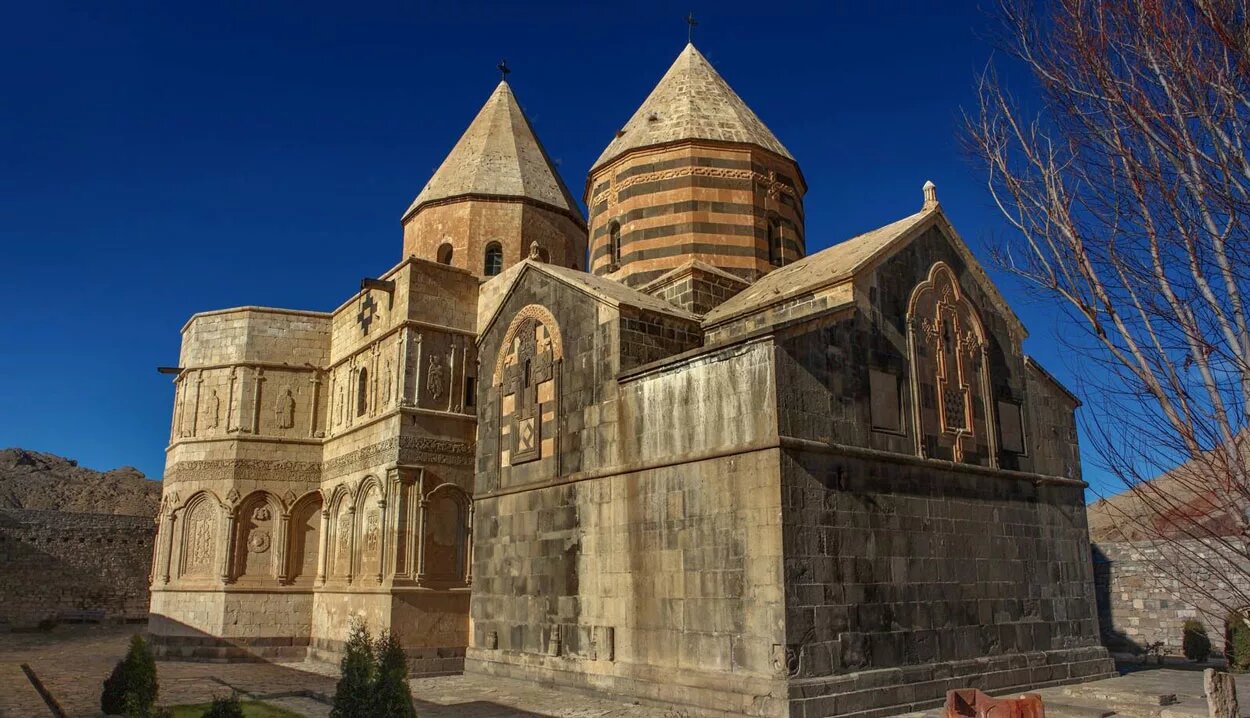West Azarbaijan: a journey through history, nature, and diversity

URMIA – Tourists arriving in West Azarbaijan province are immediately drawn into a world where every hill and ancient ruin narrates a story of past empires and cultural exchanges.
Situated in the northwest of Iran, the region stands as a crossroads of history and breathtaking landscapes. From bustling urban centers like Urmia to remote archaeological sites scattered across its rugged terrain, the province encapsulates thousands years of human heritage.
Archaeological excavations in the region have uncovered remarkable remnants of bygone eras. Sites such as Haftvan, Ahranjan, and Kul Tepe Selmas, along with Hasanlu, Sardasht connection areas, and numerous other mounds—including Gok Tepe, Digale Urmia, Takht Suleiman, and Qalaichi Bukan—serve as tangible links to civilizations that once prospered here. The area has witnessed the rise and fall of monumental cultures, including Urartu, Manae, the Assyrians, and Persians, thus earning its place as a cradle of world civilization during the first millennium BC.
From intricately carved inscriptions of the Sassanid era to the remnants of grand fire temples linked to ancient Zoroastrian practices, West Azarbaijan is a living museum that illustrates the interplay between conquest, culture, and religion.
Sacred sites and pilgrimages
Among the province’s historical landmarks, two UNNESCO-listed sites stand out for their exceptional cultural and religious significance. The Qara Kilisa or the Monastery of Saint Thaddeus, serves as the final resting place of one of the 12 apostles of Jesus Christ. Built with black hewn stones in its early construction and later enhanced with white limestone additions, the church is not only an architectural marvel but also a sacred pilgrimage destination. Every August, Christians from across the globe gather to observe the ancient “Badarak” ritual, reaffirming the site’s spiritual legacy.
Similarly, the Takht Suleiman complex, steeped in Sassanid lore, is a testament to the importance of ancient fire temples. Known historically as the city of “Shiz” and “Ganjak,” this site once hosted one of the principal fire temples of Zoroastrianism. It continues to captivate visitors with its storied past and enigmatic ruins that evoke the grandeur of a bygone era.
Breathtaking natural landscapes
Beyond its historical treasures, West Azarbaijan boasts an equally impressive natural heritage. The region’s diverse climate, marked by four distinct seasons, nurtures a landscape where verdant green foothills transform into snow-capped expanses in winter. Adequate rainfall has carved out nearly 40 permanent and seasonal rivers, and it has also given rise to 12,000 springs and aqueducts. A network of wetlands, recognized by the Ramsar Convention, underlines the ecological significance of the area.
At the heart of this natural splendor is Lake Urmia, the largest inland lake in Iran. Despite recent challenges related to drought, the lake remains a sanctuary for thousands of colorful birds and a habitat for various species including rams, goats, leopards, wolves, and even the Iranian yellow deer, whose survival on Ashk Island symbolizes the careful balance between nature and conservation.
In addition to the lake’s scenic beauty, attractions such as the sprawling apple and grape orchards, the formidable Shlamash waterfall in Sardasht, and the vast forested areas around Sardasht and Piranshahr further enhance the province’s allure.
A destination for all seasons
Whether visitors arrive in the vibrant hues of spring and summer or brave the dramatic contrasts of the winter snows, West Azarbaijan offers something unique for every season. Historical enthusiasts, cultural pilgrims, and nature lovers alike find endless opportunities to explore, learn, and be inspired by a land where every rock and river tells a story.
The synthesis of historical depth, spiritual significance, and natural beauty not only attracts a considerable number of tourists each year but also cements West Azarbaijan’s status as a living heritage of Iran.
In this province, centuries-old monuments and modern natural wonders coexist, inviting travelers to embark on a journey through time and across terrains—a journey that continues to shape and redefine the cultural identity of northwest Iran.
AM
Leave a Comment